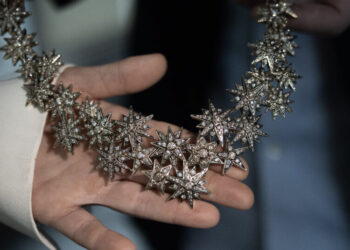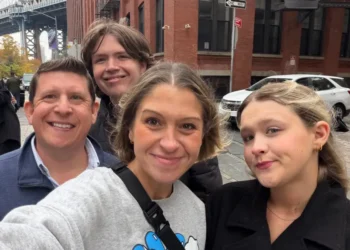“I’m pretty grumpy,” Evan Vucci, the chief Washington photographer for The Associated Press, said in federal court in March. It was “rough,” he said, for a news photographer like him to “sit around and not do anything.”
Mr. Vucci was testifying as part of The A.P.’s legal challenge against the White House’s decision to bar the wire service from events covered by the press pool, a small contingent of journalists dispatched to chronicle the president’s actions at limited-space events.
Arguments in that case are set to continue on Monday in the U.S. Court of Appeals for the District of Columbia Circuit. At stake is whether the president is entitled to curate the crew of reporters who cover official events in the Oval Office. Can he boot those whose work he doesn’t like?
Amid the conflicting briefs and oral arguments playing out publicly, something curious has taken place much more quietly: The administration has restored frontline access for Mr. Vucci and other A.P. photographers, even as it often excludes A.P.’s reporters from press pool events. The A.P., a global news organization founded in 1846, reaches four billion people a day through news organizations that republish its work.
“For me, I’m back to normal, completely,” Mr. Vucci said in an interview. “It’s like nothing happened, and it’s completely different for the print side of things.”
The administration’s forked policy has the appearance of illogic. Why make a fuss of stiff-arming The A.P. only to welcome its photographers back into the fold?
The somewhat contradictory approach, some experts say, is consistent with President Trump’s approach to the media in general. He is eager to energize his MAGA base by bashing the work of mainstream journalists while keeping them close enough to carry his message to the world and perhaps take a memorable photo or two of him in action.
“It’s been his M.O. forever,” said Susan Mulcahy, a former New York Post reporter who covered Mr. Trump and co-wrote “Paper of Wreckage,” a recent oral history of the tabloid. “He will trash a press person when he doesn’t get what he wants, but he’s never going to totally throw out an important press organization. He’s not. He needs them. That’s his oxygen.”
Presidential quirks notwithstanding, the press pool demotion for A.P. reporters remains a serious problem, said Karen Kaiser, the news organization’s top lawyer.
“The government should not be permitted to pick its coverage based on what it likes or doesn’t like,” Ms. Kaiser said in an email. “These principles transcend any administration, any news organization and any journalist.”
Standing outside important presidential meetings is a disorienting posture for A.P. journalists, who have long been at the literal center of the action at the White House. The wire service’s correspondents occupy the middle seat in the front row of the White House briefing room; before Mr. Trump’s first presidential term, White House press secretaries typically called on the A.P. representative to ask the first question at briefings.
Also by tradition, the A.P. photographer is the first photographer to enter rooms where events are to take place. And whereas some slots in the pool had a rotating cast of news organizations, The A.P. had two permanent slots, so at least one of its reporters and one of its photographers attended all White House events and presidential outings.
That changed just three weeks into the second Trump administration. Karoline Leavitt, the press secretary, informed Zeke Miller, then The A.P.’s chief White House correspondent, that the organization’s personnel would be barred from the Oval Office unless it changed its policy on describing the Gulf of Mexico.
Mr. Trump had issued an executive order renaming the body of water the Gulf of America on the first day of his new term. The A.P.’s Stylebook, a widely used guide to American English usage and style, stuck with Gulf of Mexico while “acknowledging the new name Trump has chosen.”
Julie Pace, The A.P.’s executive editor, said the organization had always maintained a “good, professional working relationship” with Mr. Trump’s campaigns and his presidential aides. “We didn’t have any inkling that we were a target or would be retaliated against,” she said.
A more pugnacious organization might have sued immediately. Not The A.P.: “An adversarial legal fight with anybody we cover is not something that we seek,” said Ms. Pace, who noted that the news service had tried to negotiate a solution with the White House. But diplomacy failed, leaving The A.P. slogging through a complicated court battle, arguing that the administration had unconstitutionally withdrawn its access because of its editorial decisions.
In late February, days after The A.P. filed suit, Ms. Leavitt announced that the White House would commandeer the press pool, whose makeup had been determined by the nonprofit White House Correspondents’ Association. The White House’s press policies have given a foothold to smaller news outlets, including partisan organizations whose representatives have tossed friendly questions to Mr. Trump and his aides.
The White House has argued that presidents are free to consider viewpoints when choosing which journalists get access to their inner chambers. Davis Ingle, a White House spokesman, said in a statement: “The Trump White House’s changes to the press pool have all been additive, which is why we’ve expanded access to new media in an unprecedented way.”
In April, a U.S. District Court judge ruled in The A.P.’s favor and issued a preliminary injunction rescinding the access denial. But the administration appealed to the U.S. Court of Appeals, which put enforcement of that injunction on pause two months later. (It allowed the injunction to remain in force for events in the East Room.) While the hearing before a new appeals court panel is scheduled for Monday, it is unclear when the court will issue a ruling.
Through its legal ups and downs, the White House has maintained its bifurcated access standards for A.P. photographers and reporters. A.P. officials said they had not received an explanation about the policy, and the White House did not provide a specific rationale in response to questions from The New York Times.
Mr. Trump has made it clear he likes seeing himself in A.P. photography. Mr. Vucci snapped the iconic image of Mr. Trump raising his fist to a crowd in Butler, Pa., after surviving an assassination attempt in July 2024. That photograph appears on the cover of Mr. Trump’s book “Save America,” a promotional vehicle for his 2024 presidential campaign.
Marc Fisher, a biographer of Mr. Trump and a former Washington Post reporter, said Mr. Trump and his aides “view the photographers as less dangerous and less antagonistic than reporters.”
“To him, a great news photo, a great magazine cover, is more important than a great podcast appearance, just because he is and will always be an artifact of the ’50s and ’60s,” Mr. Fisher said.
A.P. reporters, meanwhile, await their turn, without knowing when it will come. According to Mr. Miller, now the deputy Washington bureau chief, the White House placed The A.P. in a “secondary print” category of the pool. “We have no idea what the universe of people eligible for that slot is,” Mr. Miller said.
“We ask to join the pool pretty much every day or before every event. We ask to join the trips,” he said. “Most often we’re told the pool is full, but others are getting in.”
When A.P. reporters have been included in the pool, Mr. Miller said, the duty has “often meant more golf weekend trips than substantive Oval Office meetings.” That’s not a complaint, he noted. The wire service, he said, has always invested the time and money to cover all presidential events, regardless of news value.
“That is our responsibility,” he said. “To be there.”
The post Trump Welcomes A.P.’s Photographers. Its Reporters? Not So Much. appeared first on New York Times.




